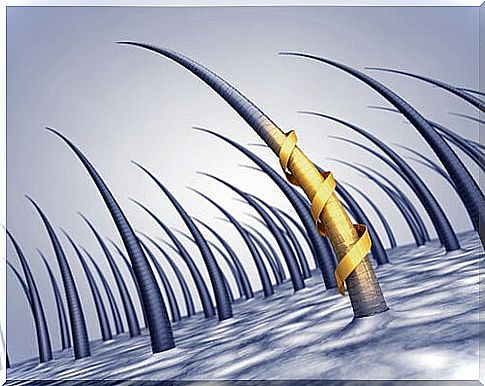Hair Transplant: Everything You Need To Know
Hair transplantation, or hair transplantation, is a surgical procedure to correct baldness, in which an area with high hair density is transferred to another with low density. In this way, the hair follicles from the donor area are implanted in the recipient area.
The most common is that the donor area is the area at the back of the head. There the hair is less susceptible to the hormones that cause androgenic alopecia. When transplanted, the follicles do not lose this characteristic, so they will allow the normal growth of hair where they are implanted.
Only in very few cases is hair transplantation done in areas other than the head. However, it can also be used for the recovery of areas such as the eyebrows, or the beard. Currently only transplants of own hair follicles , or of an identical twin, are performed.
Preparation for surgery

Like any surgical procedure, hair transplantation also requires adequate preparation. The first thing that is done is an evaluation to determine the cause of baldness. Also to establish if the donor area is of sufficient quality to carry out the transplant. Likewise, the usual thing is that the general health condition of the patient and his psychological stability are analyzed.
Subsequently, the doctor will order the rigorous preoperative tests: chest x-ray, blood count, coagulation tests, echocardiography and any other that he deems necessary. If all the conditions to perform the procedure are met, the following recommendations are likely to be indicated prior to surgery:
- Let the hair grow as long as possible.
- Protect yourself from the sun.
- Avoid anti-inflammatory drugs and vitamin supplements, as well as tobacco and alcohol.
For the rest, the most general advice will be given, such as eating well, wearing loose clothing on the day of surgery, not driving after it, and staying away from stress.
Hair transplant techniques

To do a hair transplant basically two techniques are used: FUSS or FUT and FUE. The first is also known as the “Strip Technique”. For its part, the FUE or Follicular Unit Extraction technique comes in two modalities: classic or with the SAFER system.
Let’s see the characteristics of each of these techniques :
- FUSS or FUT technique. Using this technique, an area of the scalp is removed from the nape of the neck, approximately 1 cm wide by 15-20 cm long. Then each follicular unit is removed and then implanted in the recipient area. The incision is sutured and hidden with the same hair.
- Classic FUE technique. In this technique, not a strip of scalp is removed, but each follicular unit. For this a circular scalpel is used. Then the follicles are implanted one by one, that is, hair by hair.
- FUE technique with SAFER. It is the same as the previous one, but instead of the circular scalpel an automated device is used. This improves efficiency and minimizes damage.
Hair transplant procedure

Although capital transplantation is a completely safe surgical procedure, it is also a rather laborious procedure. In general, between 9 and 10 professionals should intervene: 3 or 4 doctors, 5 or 6 technicians and a nurse. Typically, the surgery takes an average of 5 to 6 hours.
Despite everything, it is almost always an outpatient procedure that only requires local anesthesia. The risk of complications during surgery is minimal. Typically, surgical work is carried out in three steps:
- The extraction of the follicle from the donor area. It consists of the removal of hair from the donor area, generally from the nape of the neck.
- Separation and preparation of hair follicles. This step depends on the technique used to perform the hair transplant. In the FUSS it is necessary to separate each follicle, one by one, with the help of microscopes. In the other techniques, the follicles are already separated and it is only necessary to prepare them for the transplant.
- Follicle implantation. Each hair is implanted, through micro-holes of no more than 1 mm. Previously, a design must have been set that allows the hairs to be inserted so that their final appearance is very natural.
Candidates for a hair transplant cannot be under 25 years of age. In general, they must be in good health. The result of the procedure is not always ideal, so it is sometimes necessary to repeat it.









